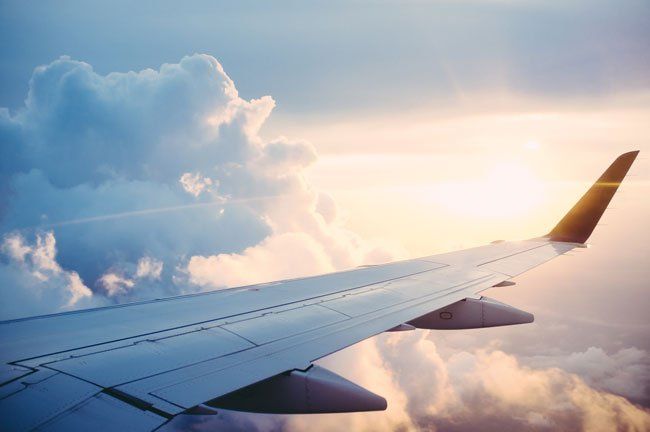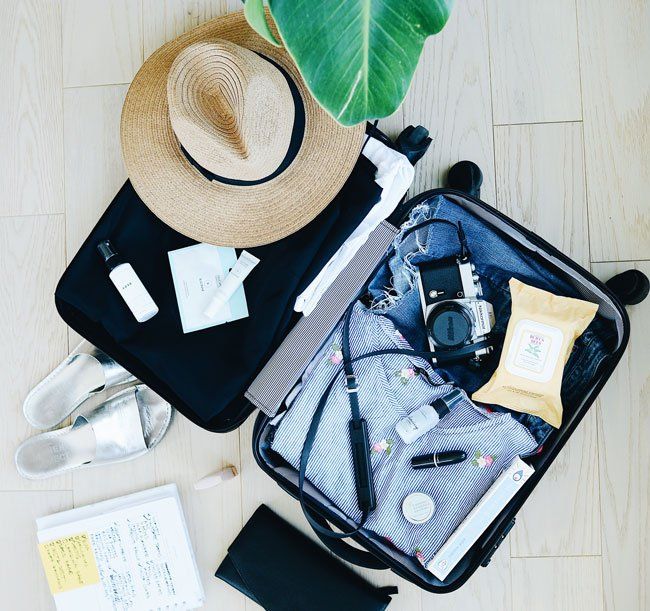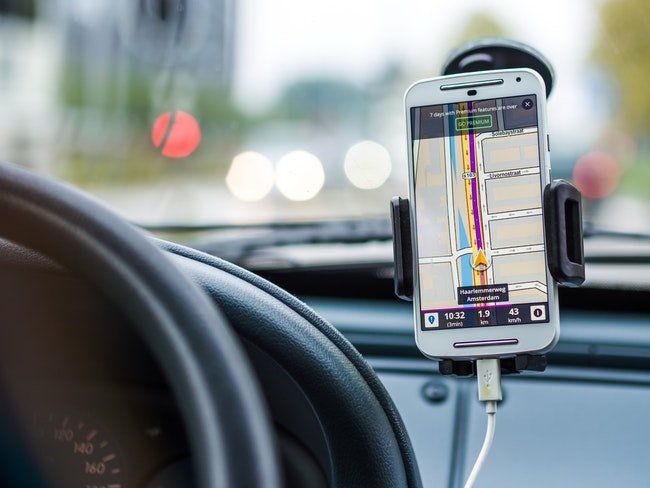Since many people take time off to visit family and friends in other places, the holidays are the busiest time of year to travel. According to a survey from the American Automobile Association (AAA), more than 99 million Americans travel between the days leading up to Christmas and New Year’s.1 It’s also one of the most stressful times to travel, with people reporting it was as taxing as moving. Take the stress out of holiday travel with these tips.
IF YOU’RE FLYING

Photo by Ross Parmly on Unsplash
Do your research. Whether you’re planning weeks in advance or you’re trying to get a last-minute deal, it helps to do your research. Choose flexible travel dates to help you pinpoint the best deal. Also, consider flying into an alternate airport nearby that may not be as busy.
Plan carefully. Flying in the winter may increase the chances of flight delays due to inclement weather. Avoid narrow layover times to reduce the chances of missing connecting flights or choose connections in warmer cities, if possible.
Plan carefully.
Flying in the winter may increase the chances of flight delays due to inclement weather. Avoid narrow layover times to reduce the chances of missing connecting flights or
choose connections in warmer cities, if possible.

Pack light. More airlines are charging to check bags. Save money by packing lighter or sending items ahead to your destination instead of bringing them on the plane. Send gifts to their destination, or if you must bring them with you, don’t wrap them.
Leave early, whether you’re flying or driving. This will allow you the buffer time necessary to deal with traffic jams, parking and security. If you live in an area with a light-rail transit system that stops near the airport, use it to avoid traffic and airport parking.
Stay up-to-date on flight changes. Download your airline’s app to get alerts about gate changes and delays.
STAY HEALTHY WHILE YOU TRAVEL
In addition to being the holiday season, it’s also cold and flu season. Traveling in close proximity to others may increase your chances of getting sick during your vacation. Keep germs and viruses at bay with these tips:
Stay hydrated. Bring a water bottle and fill it at a water fountain once you pass through security, or purchase water from a vendor in the secured area. Since the pressurized cabin of the airplane tends to dry the eyes and nasal passages, increase your water intake to keep germs away. Water may also help prevent blood clots.
Bring your own blanket and pillow. While some airlines still provide these amenities, most do not. Plus, carrying a small, fold-able blanket and a neck pillow will reduce the number of germs you’re exposed to.

Photo by Timothy Eberly on Unsplash
Bring healthy snacks, including nuts, dried fruit and other easily portable food items.
Move around to avoid blood clots. Blood clots are a major concern when flying, especially if you are flying cross-country or overseas. Get up and walk around the cabin, if possible. While seated, tap your feet or do seated calf raises to improve blood circulation.
IF YOU’RE DRIVING
Get your car ready. Take your car in for a tuneup and address any potential issues beforehand. Have the mechanic check fluid levels and check your tires as well.

Photo by Abigail Keenan on Unsplash
Plan your route ahead of time. Whether you’re driving a few hours or a few days, it helps to know the route you’re taking. If you’re taking a long trip, plan where you want to stop for the night and make a reservation at a nearby hotel so you can be sure you’ll have somewhere to stay overnight.
Keep roadside assistance information on hand. Having this information readily available will help you think clearly and act quickly in the event of car issues.
Store a cell phone charger in the car. Using your phone to navigate or play music can drain the battery. Keep a charger in the glove compartment or center console to keep it charged in case of an emergency.

Pack a winter safety kit, if you’re traveling through a snowy area. The kit should include an ice scraper, a small snow shovel, tire chains, tow rope, jumper cables, a blanket, flashlights, a first-aid kit and a portable radio.
TIPS FOR TRAVELING WITH CHILDREN
Take your time. Give yourself lots of time—whether you’re flying or driving—to check in, get through security, at rest stops, etc., especially if you’re traveling with young children.
Pack small toys. When your child gets fussy or bored, give them a toy to play with.

Photo by Markus Spiske on Unsplash
Pack a change of clothing (or several if you’re traveling with a baby) in case of spills or accidents.
Have a small bag with only diaper-changing items to take with you into the restroom.
Remind your children not to talk to strangers. Keep an eye on them, or take them with you to the restroom.
Where are you planning to travel over the holidays? Comment below.



